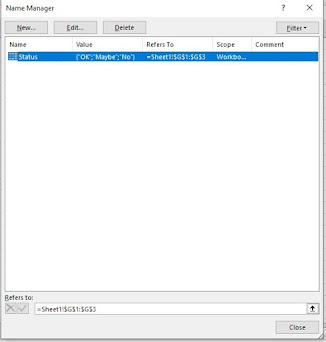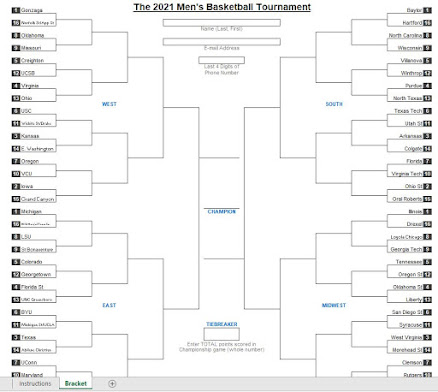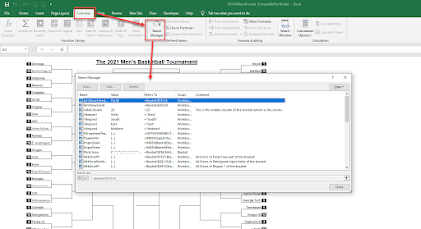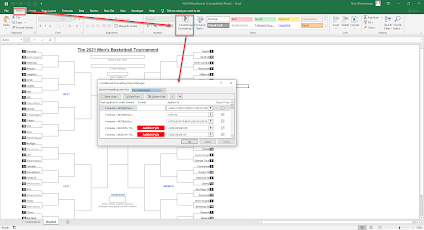One exciting aspect of using macros in Excel is that they
can “talk” to other programs, like PowerPoint. One example I’ve shared is
exporting data from Excel into Microsoft Word as the basis for writing a book.
Another common use is exchanging information with Microsoft Outlook and writing emails from Excel.
Previously, I showed how you can send emails from Excel. Today I want to show
you a quick example how you can export email data from a folder in Outlook to
Excel.
Let’s pretend you’ve saved emails every month with monthly
expenses for your business in a folder called “01 Reports” in your Outlook email.
You want to summarize the expenses in an Excel sheet without having to open and
copy and paste every email in the folder. A macro in Excel written with VBA is
the perfect solution for this scenario. Here’s how to do it.
First, setup the template. In cell A2 I am going to allow
the user to write in the name of the folder they want to search through for the
email reports to export to Excel. Then, we will place the email report date,
email sender, and the expense cost into columns B, C, and D respectively. Once
the template is setup, we can begin coding.
Create a new macro called “Search_Email_Folder.” Open the
Visual Basic Editor (VBE). Go to Tools > references. In the object library,
scroll down and Check the box of “MICROSOFT OUTLOOK 14.0 OBJECT
LIBRARY” to make it available for Excel VBA.
Add a header to the top of the code that explains what the
macro does. This macro loops through a specified folder in Outlook to
export all the expense report data
Sub Search_Email_Folder()
On Error GoTo ErrHandler
'Optimize Macro
Speed
Application.ScreenUpdating
= False
Application.EnableEvents = False
Application.Calculation = xlCalculationManual
Dim WS As
Worksheet
Set WS =
Worksheets(1)
'Find the last
non-blank cell in column B and clear all the old data
Dim lRow As Long
lRow =
Cells(Rows.Count, 2).End(xlUp).Row
WS.Range("B2:G" & lRow).ClearContents
The Outlook object model provides all of the functionality
necessary to manipulate data that is stored in Outlook folders, and it provides
the ability to control many aspects of the Outlook user interface (UI). What is
MAPI? Use GetNameSpace ("MAPI") to return the Outlook NameSpace
object from the Application object. The only data source supported is MAPI,
which allows access to all Outlook data stored in the user's mail stores.
This is a “late binding” example. the following code sets an object variable to
the Outlook Application object,
which is the highest-level object in the Outlook object model. All Automation
code must first define an Outlook Application object to be
able to access any other Outlook objects. Most programming solutions interact
with the data stored in Outlook. Outlook stores all of its information as items
in folders. Folders are contained in one or more stores. After you set an
object variable to the Outlook Application object, you will
commonly set a NameSpace object
to refer to MAPI, as shown in the following example.
Dim objOutlook
As Object
Set objOutlook
= CreateObject("Outlook.Application")
Dim objNSpace
As Object
Set objNSpace
= objOutlook.GetNamespace("MAPI")
Dim myFolder As
Object
'---define the
Outlook folder to search through. refers to cell so anyone can change the text
without changing the macro code
Dim
EmailFolderToSearch As String
EmailFolderToSearch = WS.Cells(2, 1) '—place name of folder in cell A2.
must update if insert new columns before the first one
'error
handling if no folder specified
If
EmailFolderToSearch = "" Then
MsgBox
"No folder specificed."
Exit Sub
Else
'proceed
End If
'MsgBox
EmailFolderToSearch
‘the email
folder to loop through is actually a sub folder of the Inbox
Set myFolder =
objNSpace.GetDefaultFolder(olFolderInbox).Folders(EmailFolderToSearch)
Dim rcvDate As Date
Dim iRows As
Integer
Dim objItem As
Object
Dim
EmailSender As String
Dim
SenderEmailAddress As String
Dim
NumofReports As String
Dim filID As
Integer
Dim DrwPost As
Integer
iRows = 2
MsgBox "The
number of emails found is: " & myFolder.Items.Count & " in
" & myFolder.Name & " folder."
'Loop through
every email in outlook drawing folder
For Each
objItem In myFolder.Items
If
objItem.Class = olMail Then
Dim
objMail As Outlook.MailItem
Set
objMail = objItem
rcvDate = objMail.ReceivedTime
EmailSender = objMail.SenderName
SenderEmailAddress =
objMail.SenderEmailAddress
If
Left(SenderEmailAddress, 3) = "/O=" Then
'internal gemail, skip, don't increase the row number
Else
‘where to put the data in the Excel sheet:
WS.Cells(iRows, 2).Value = rcvDate
WS.Cells(iRows, 3).Value = EmailSender
WS.Cells(iRows, 4).Value = SenderEmailAddress
'find the number of reports,
information contained within the body of the email
filID = 0
DrwPost = 0
mailBody = objMail.Body
‘search the email body for the word REPORTS
filID = InStr(1, mailBody,
"REPORTS", vbTextCompare)
If filID> 0 Then
DrwPost = filID + 6
NumofReports = Mid(mailBody, DrwPost, 15)
WS.Cells(iRows, 7).Value = NumofReports
Else
'number of reports not found
End If
iRows = iRows + 1
End If
End If
Next
'Release
Set objMail =
Nothing
Set objOutlook
= Nothing
Set objNSpace
= Nothing
Set myFolder =
Nothing
ErrHandler:
Debug.Print Err.Description
'Reset Macro
Optimization Settings
Application.EnableEvents = True
Application.Calculation = xlCalculationAutomatic
Application.ScreenUpdating = True
MsgBox
"Macro complete!"
End Sub






















